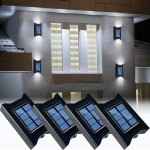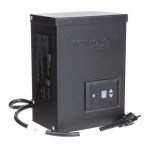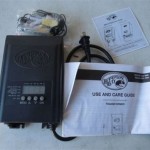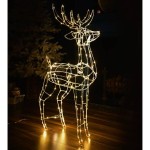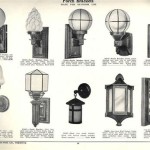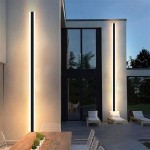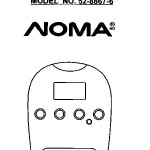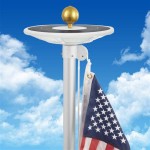LED Bulbs for Outdoor Fixtures: Illuminating Your Exterior Spaces
Outdoor lighting serves multiple crucial purposes. It enhances security by deterring potential intruders, improves visibility for navigating pathways and driveways, and elevates the aesthetic appeal of a property. Choosing the right light bulb for outdoor fixtures is essential to achieving these goals effectively and efficiently. Light Emitting Diode (LED) bulbs have emerged as the dominant choice for outdoor lighting due to their numerous advantages over traditional incandescent and fluorescent options.
This article will delve into the specific benefits of using LED bulbs in outdoor fixtures, outline key considerations for selecting the appropriate LED bulbs, and provide guidance on ensuring optimal performance and longevity in various outdoor environmental conditions. Factors such as brightness, color temperature, weather resistance, and energy efficiency will be examined in detail.
Energy Efficiency and Cost Savings
One of the most compelling reasons to switch to LED bulbs for outdoor fixtures is their superior energy efficiency. LEDs consume significantly less energy than incandescent bulbs to produce the same amount of light. Incandescent bulbs convert only a small percentage of the electricity they use into light, with the majority being lost as heat. In contrast, LEDs convert a much higher percentage of electricity into light, resulting in far less wasted energy.
The energy savings associated with LEDs can translate into substantial cost reductions over the lifespan of the bulb. Consider a typical outdoor fixture that is used for several hours each night. Replacing a 60-watt incandescent bulb with a 9-watt LED bulb that produces the same level of brightness can reduce energy consumption by more than 80%. Over time, these savings can accumulate significantly, especially when multiple outdoor fixtures are involved. While the initial cost of an LED bulb may be higher than that of an incandescent bulb, the long-term cost savings from reduced energy consumption and extended lifespan make LEDs a more economical choice.
Furthermore, reduced energy consumption contributes to a smaller carbon footprint, making LEDs a more environmentally friendly lighting solution. By using less electricity, LEDs help to reduce the demand on power plants, which can lead to lower greenhouse gas emissions and a more sustainable environment.
Durability and Longevity
Another key advantage of LED bulbs is their exceptional durability and longevity. LEDs are solid-state lighting devices, meaning they do not have fragile filaments or glass enclosures that are prone to breakage. This makes them much more resistant to shock, vibration, and impact than traditional incandescent or fluorescent bulbs, which is particularly important for outdoor fixtures that may be exposed to harsh weather conditions or accidental bumps.
The lifespan of an LED bulb is significantly longer than that of an incandescent or fluorescent bulb. A typical LED bulb can last for 25,000 hours or more, while an incandescent bulb typically lasts for only 1,000 hours. This means that LED bulbs need to be replaced much less frequently, which reduces maintenance costs and saves time and effort. In outdoor applications, where bulbs may be difficult to access or replace, the extended lifespan of LEDs is a significant benefit.
The extended lifespan of LEDs also contributes to their overall cost-effectiveness. Even though the initial cost of an LED bulb may be higher, the fact that it lasts so much longer means that it will ultimately cost less over its lifetime than multiple incandescent or fluorescent bulbs. Furthermore, the reduced need for replacement reduces waste and minimizes the environmental impact associated with manufacturing and disposal of light bulbs.
LEDs are also less susceptible to damage from temperature fluctuations, which is a crucial consideration for outdoor lighting. Incandescent bulbs can be sensitive to extreme heat or cold, which can shorten their lifespan or cause them to fail prematurely. LEDs, on the other hand, are designed to operate reliably in a wide range of temperatures, making them a more robust and dependable choice for outdoor applications.
Choosing the Right LED Bulb for Outdoor Fixtures
Selecting the appropriate LED bulb for outdoor fixtures requires careful consideration of several factors, including brightness, color temperature, weather resistance, and fixture compatibility. Understanding these factors will help ensure that the chosen LED bulbs provide the desired illumination and perform reliably in the outdoor environment.
Brightness: The brightness of a light bulb is measured in lumens (lm). The higher the lumen rating, the brighter the light. When replacing an incandescent bulb with an LED bulb, it is important to choose an LED bulb with a comparable lumen rating to achieve the same level of brightness. For example, a 60-watt incandescent bulb typically produces around 800 lumens. An LED bulb that produces 800 lumens would be a suitable replacement. Determine the appropriate lumen output based on the specific lighting needs of the outdoor space. For example, pathway lighting may require lower lumen output than security lighting.
Color Temperature: Color temperature is measured in Kelvin (K) and describes the color appearance of the light. Lower color temperatures (e.g., 2700K) produce a warm, yellowish light, while higher color temperatures (e.g., 5000K) produce a cool, bluish-white light. The choice of color temperature depends on the desired ambiance and the specific application. Warm white light is often preferred for creating a cozy and inviting atmosphere, while cool white light is better suited for providing bright, clear illumination for security or task lighting. For outdoor applications, a color temperature between 2700K and 3000K is often recommended, as it provides a warm and welcoming light that is less harsh and more visually appealing.
Weather Resistance: Outdoor light fixtures are exposed to a variety of weather conditions, including rain, snow, wind, and extreme temperatures. It is essential to choose LED bulbs that are specifically designed for outdoor use and are rated for weather resistance. Look for bulbs with an Ingress Protection (IP) rating that indicates the level of protection against dust and water. A bulb with an IP65 rating, for example, is protected against dust and water jets from any direction, making it suitable for most outdoor applications. Ensure that the bulb is compatible with the fixture's weather resistance rating. If the fixture is designed for wet locations, the bulb should also be rated for wet locations.
Fixture Compatibility: Before purchasing LED bulbs, ensure that they are compatible with the existing outdoor fixtures. Consider the bulb base type (e.g., E26, E12, GU10) and the fixture's voltage requirements. Some LED bulbs are designed to work with dimmers, while others are not. If the fixture is connected to a dimmer switch, choose LED bulbs that are specifically labeled as dimmable. Check the fixture's wattage rating and ensure that the LED bulb does not exceed the maximum wattage allowed. Using a bulb with a higher wattage than the fixture is designed for can overheat the fixture and potentially cause a fire hazard. Also, consider the size and shape of the bulb to ensure that it fits properly within the fixture without obstructing the lens or interfering with its operation.
Additional Considerations: When choosing LED bulbs for outdoor fixtures, there are several additional factors to consider. Look for bulbs that are Energy Star certified, as this indicates that they have been tested and meet strict energy efficiency and performance standards. Consider the beam angle of the bulb, which determines the spread of light. A wider beam angle is suitable for general illumination, while a narrower beam angle is better for spotlighting specific areas or objects. Finally, check the bulb's warranty to ensure that it is protected against defects or premature failure. A longer warranty provides peace of mind and indicates that the manufacturer has confidence in the quality and durability of the bulb.
Properly installed and maintained LED bulbs can significantly enhance the safety, security, and aesthetic appeal of a property while also reducing energy consumption and costs. By carefully considering the factors discussed in this article, property owners and managers can make informed decisions about selecting the best LED bulbs for their outdoor lighting needs.
In conclusion, LED bulbs provide a superior lighting solution for outdoor fixtures, offering numerous advantages over traditional incandescent and fluorescent options. Their energy efficiency, durability, and long lifespan make them a cost-effective and environmentally friendly choice. By carefully considering factors such as brightness, color temperature, weather resistance, and fixture compatibility, one can select the appropriate LED bulbs to achieve the desired illumination and performance in outdoor spaces.

Outdoor G40 String Lights Festive Patio And Garden Lighting Chronos

Can Led Lights Be Used Outdoors Bpm Electric

Best Outdoor Lighting Bulbs Of 2024

How To Choose The Best Outdoor String Lights

Outdoor Led Lighting Exterior Light Fixtures E Conolight

Types Of Led Lights The Home Depot

Outdoor G40 String Lights Festive Patio And Garden Lighting Chronos

Dusk To Dawn Light Bulbs Outdoor

Indoor And Outdoor Light Bulbs Pacific Lamp Supply Company

Outdoor And Backyard Lighting We Love Reviews By Wirecutter
Related Posts
